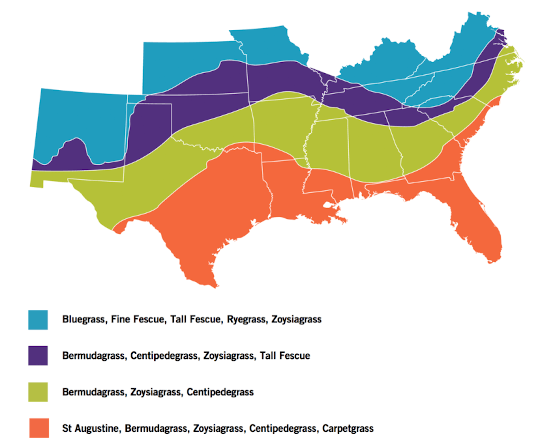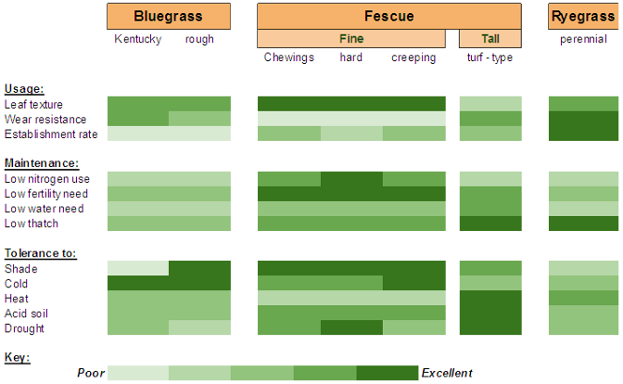2 minute read
Overview
Lawn grasses are divided into ‘cool-season’ and ‘warm-season’ based on their responses to air and soil temperatures. Both types of grass can be grown in Orange County (see the purple band in the graphic below), but neither performs well here. Choosing locally-adapted varieties and following good cultural practices is important for minimizing problems.
- Most cool-season grasses (fine fescues, Kentucky bluegrass, ryegrass) will grow here during fall, winter, and early spring but will not survive the summer.
- Tall fescues can persist but for a dense lawn, you should overseed every fall.
 SC Extension Selecting a Lawn Grass
SC Extension Selecting a Lawn Grass
Choosing a turfgrass
Because neither warm-season nor cool-season grasses are happy here, a good approach is to plant different turfgrasses in each microclimate of your yard. Consider:
- desired tolerance for shade, heat, cold, and wear
- appearance (including during dormancy)
- fertilizer and mowing requirements
- ease and rapidity of establishment.
| Tall fescue | Zoysia | Bermuda | |
|---|---|---|---|
| Dormancy | summer | winter | winter |
| Maintenance | medium | high | high |
| Establishment | fast | v slow | fast |
| Tolerance | |||
| Shade | good | good | v poor |
| Heat | v good | v good | excellent |
| Cold | v good | good | fair |
| Drought | v good | excellent | excellent |
| Wear | v good | v good | excellent |
- Trees and Turf: Are They Compatible?
- Selecting and Managing Lawn Grasses for Shade
- Selecting a lawn grass
- Carolina Lawns
Cool-season grasses
These are probably the best choice for a north- or northeast-facing slope or light shade/afternoon shade.
Within this group, the tall fescues are the best-suited to our area. Newer tall fescue varieties may be better choices because the open, upright habit of older varieties like Kentucky 31 tends to permit crabgrass invasion. The slower-growing, dwarf-type tall fescue varieties, especially Bonsai, also are susceptible to crabgrass invasion.
- tall fescue — best for Orange County
- fine fescue
- Kentucky bluegrass
- annual ryegrass
- perennial ryegrass

Warm-season grasses
These should be considered for a hot southern or western exposure, especially if there is a slope. Warm-season grasses for our area require 50–75% less water for optimal appearance and are significantly more drought-tolerant than cool-season grasses.
- Bermuda
- zoysia
Turfgrass behavior
Turfgrass behavior is temperature-dependent, but the response of the blade (shoot) is determined by air temperature, while the root system is controlled by soil temperature. Remember that soil temperature change lags significantly behind air temperature change.
- Shoot — air temperature
- Root — soil temperature, top 4″
| Optimum growth | |
|---|---|
| Shoot Cool-season Warm-season | 60–75°F 80–90°F |
| Root Cool-season Warm-season | 50–65°F 75–85°F |
| Growth stops due to heat | |
|---|---|
| Shoot Cool-season Warm-season | 90°F 120°F |
| Root Cool-season Warm-season | 77°F 110°F |
| Growth stops due to cold | |
|---|---|
| Shoot Cool-season Warm-season | 40°F N/A |
| Root Cool-season Warm-season | 33°F 50°F |
| Low temperature kill possible | |
|---|---|
| Cool-season | if temperature drops rapidly below 20°F |
| Warm-season | 25°F |
Source: Carolina Lawns
